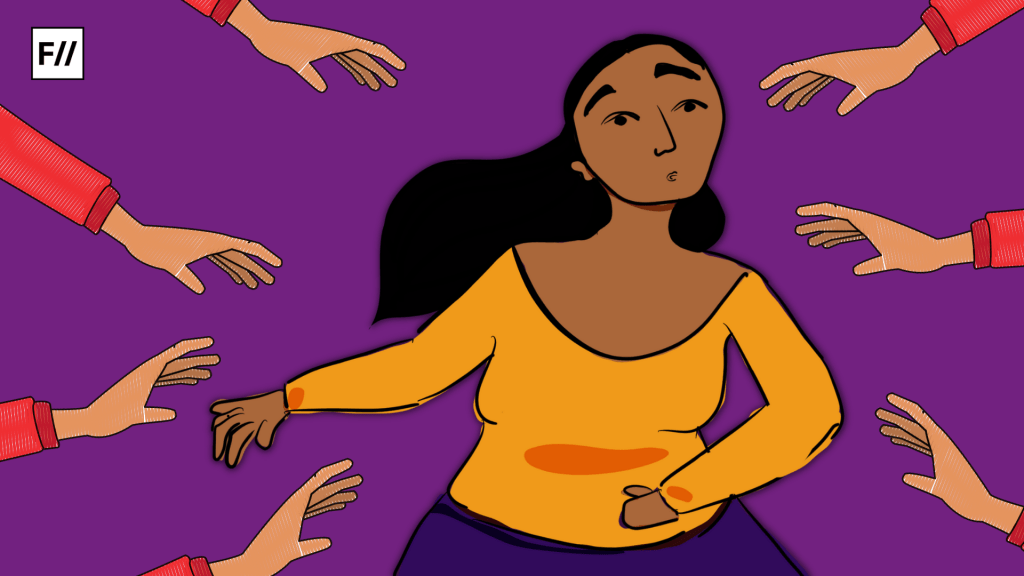Sexism refers to the harmful beliefs, attitudes, and behaviours rooted in the idea of male superiority and dominance which manifest in different ways to discriminate against women and other minority genders. The kind of sexism that is overtly hostile and competitive towards the woman and punishes the woman for defying the demands of the patriarchal status quo is called hostile sexism, which is also called misogyny. It may be understood as the law that upholds and enforces patriarchy and punishes when the law is violated.
Hostile sexism would be visible in the forms of aggression, use of violence, derogatory comments, sexual harassment, verbal abuse, etc. against women meant to be brought back into the fold of the patriarchal status quo and punish them for transgressing from their assigned place.
Understanding hostile sexism through benevolent sexism
The idea behind sexism in its entirety is rooted in conforming to your gender role and position in society, which is established by the patriarchal order. When the woman conforms to these roles and complies obediently, she faces ‘benevolent sexism,’ the kind that appears positive on the surface and offers apparent benefits to the woman in the form of protection, providing, and other ‘rewards,’ for being the ‘right kind,’ of woman who embodies all the traditional ideals.

Under this view, the woman’s image appears idealised, romanticised, and the harbinger of moral purity. She is the woman who deserves to be protected and cared for by the man. So even though this idea is called ‘benevolent,’ on careful speculation, one may realise that behind the façade of benevolence there are many harmful ideas that truly do not deserve to be labelled under this positive connotation.
However, when the woman starts defying her place and challenging the social order, she is punished for her defiance and subjected to ‘hostile sexism.’ Under this view, the woman will be objectified, sexualised, and subjected to different kinds of aggression under the justification that she has violated her designated place. Hostile sexism is therefore in your face, aggressive, and fairly easy to spot. Its counterpart, benevolent sexism, will appear ambiguous and may be mistaken for chivalry. Take, for instance, the portrayal of violence against women in Sandeep Reddy Vanga’s films, where Rashmika’s character in Animal was idealised for fitting the patriarchal norm while Tripti Dimri’s morally objectionable and promiscuous character is objectified and degraded for going astray.
Other common examples of hostile sexism include prevalent attitudes in the workplace, such as when a woman employee gets a promotion, then implying that she “slept her way to the top.” Women and other journalists from minority communities who dare to challenge the status quo and work to expose its underpinnings have been targeted and are constantly working while jeopardising their safety. Another major example that shook the world would be the fate of Mahsa Amini, a woman who challenged the oppressive laws of the Iranian regime’s morality police and was punished for it.
The two kinds of sexism, however, are not parallel streams running across each other. This is, after all, sexism, and the two kinds often juxtapose and complement one another.
Two sides of the same coin
To illustrate with a perfect example, we take an old statement of Mohan Bhagwat, the current chief of the RSS, which points out the notoriety of rape culture in India and the intertwining dichotomies of benevolent and hostile sexism. “Such crimes hardly take place in ‘Bharat,’ but they occur frequently in India. You go to the villages and forests of the country, and there are no such incidents of gang rape or sex crimes. They are prevalent in some urban belts. Besides new legislation, Indian ethos and attitude towards women should be revisited in the context of ancient Indian values.”

The emphasis on differentiating between ‘Bharat,’ and ‘India,’ between the conservative and traditional ideas of Indian society pitted against the currents of change denoted by the western worldview, highlights the case in point. In villages where the women are deeply subsumed in the patriarchal order and abide unquestioningly by the rules, there will be no such cases of crimes against them for complying with and internalising the oppression. They will be ‘protected,’ as an exchange for knowing their place in society, which is what benevolent sexism entails. But in urban spaces, where the women have clearly transgressed from their place in the social hierarchy, when they are not confined to the domestic spaces and are not living by the patriarchal law, they will be punished in the form of such crimes, which is what hostile sexism implies.
The justifications and perpetuation of rape culture and blaming the victim therefore fall under hostile sexism. So, increased hostile sexism will lead to advocating for benevolent sexism instead, as the quote suggests. As you may see from this example, hostile and benevolent sexism are not too far apart and are rooted in the same idea.
Hostile sexism is not restricted to women
Women do bear a significant brunt of hostile sexism; however, as the definition entails, hostile sexism punishes anyone who transgresses the heterosexual patriarchal law. Under this, other gender minorities like transgender people, non-binary folks, and homosexual identities come into the fold because they too are deviants according to patriarchal law. These groups challenge the gender binary, the equilibrium of desired masculine and feminine attributes, and the heterosexual relationship dynamics, among other things.
Since they are clear deviants of the Law of the Father, they must be brought back under the fold of patriarchy through the use of violence and aggression. Hence, the violence against gender non-conforming people easily falls under the category of hostile sexism, transphobia, and misogyny, and it does not get talked about in mainstream discourses, thereby going unreported and undocumented.
The takeaways
Hostile sexism and benevolent sexism are not too different from one another, and both structures are working at par to perpetuate the patriarchal world order and aid in the oppression of women. Additionally, as feminists, we must recognise the intersecting oppressions and discriminations against other gender minorities and identities due to hostile sexism. The definition of a woman by patriarchal standards does have loopholes after all: not all women can menstruate, not all women can birth, and not all women can have the same experiences and aspirations from womanhood.
We, as feminists, cannot exclude transgender women and other gender minorities from this conversation if we wish to understand the deeper nuances of the problem and combat it more comprehensively. After all, trans people have always been at the forefront of resisting the forces of patriarchy. Combating hostile sexism will prove successful only when all these nuances of the problem are addressed.
About the author(s)
Sarah (She/Her) is your local student journalist and writer pursuing her Bachelor's in Literature from Delhi University. She seeks to strike a balance between a chaotic chronically online gen-z and an insatiable learner. At the risk of coming across as cheesy, she quotes Oscar Wilde on being asked to introduce herself, "To define is to limit."





